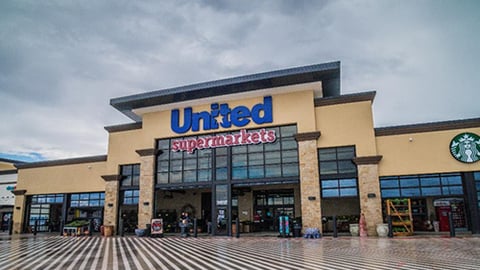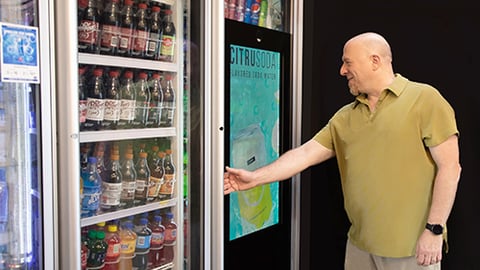How Grocers Can Make Their Loyalty Programs Go Further
The past few years have seen a massive increase in retail market share from conglomerates like Walmart and Amazon. In Q2 2023, Walmart’s online grocery sales alone made up almost 36% of the U.S. total. That’s a five-percentage-point increase from 2022.
This has forced midsize retailers to get more and more creative in their hunt for customer transactions. Many respond to this challenge by doubling down on their loyalty programs, with the expectation that incentivizing repeat loyal shopping will boost transaction frequency and basket size.
[Read more: "Majority of Shoppers Still Struggle to Afford Groceries: Survey"]
But is loyalty programming enough to help midsized retailers keep (or grow) their market share? Here’s what we found:
The problem: Loyalty programs don’t always translate to loyal customers.
Retailers have done tremendous work to differentiate their store experience and provide a loyalty offering that meets consumers’ need for value. In many instances, these loyalty programs have become highly sophisticated and have driven business value — encouraging repeat business, generating valuable customer data and insights, creating new opportunities for customer engagement, and more.
Consumers have jumped on the loyalty program bandwagon – surveys indicate that today’s average shopper has upwards of 16 loyalty programs on their mobile device. Despite the widespread investment in loyalty programs and their adoption by consumers, the top 10 grocery retailers in the United States haven't demonstrated a clear connection between the loyalty programming they use in-market and fiscal growth.
Our research shows minimal revenue increases over time for grocers with loyalty programs, paid or free. While the research did find a positive correlation between app downloads and revenue, it’s not enough to imply causation. For example, are growing companies receiving more app downloads, or do app downloads lead to higher growth?
To be clear, these loyalty programs are necessary. They have become an anticipated aspect of the customer experience and may function to protect market share. But it remains unclear whether loyalty programs grow market share or even recoup their own expenses.
The problem: Loyalty programs aren’t that different from one another.
Today’s loyalty programs offer fairly similar benefits to members, regardless of the retailer offering it. A cursory search online will draw up a handful of top 10 lists of “best loyalty programs,” but the publications lack any real consensus — each list mentions different stores with similar perks.
As can be seen in the chart above, there’s a practically interchangeable list of features without industry standards or proven effectiveness from one program to another.
As a result, in a sea of nearly identical programs, grocers are in an arms race – adding perks such as free delivery or bigger buy-one-get-one savings. But these additional program “perks” often overshadow any return on investment that loyalty programs might provide.
One way of covering the expense for these added perks is by charging customers additional fees or subscriptions. This is where bigger corporations have an advantage. Market leaders like Walmart, Amazon and Costco have a de facto lock on fee-based loyalty (think Amazon Prime), giving them a stronger grip on customer spending, since these participating shoppers are unlikely to invest in additional programs requiring membership costs.
The verdict: retailers need more than just loyalty.
Back to our original question: Can loyalty programming help midsize retailers keep (or grow) their market share?
It’s not likely.
Loyalty programs are a valuable tool for targeting the customers who visit your business occasionally or regularly, and customers for whom your locations are conveniently situated. But to compete effectively against Amazon and Walmart, retailers must think, "loyalty and ..." They need both loyalty and other strategies that expand their brand’s reach and include consumer behavior.
One way that large competitors are differentiating themselves is through making their programs multivertical. Kroger has invested in a partnership with Shell that allows shoppers to redeem points earned during their shops for fuel at participating Shell stations. The retailer attributes its 5.2% year-over-year sales growth in 2022 to this Fuel Rewards program, which drove an increase in households, more engagement and incremental spend. For regional grocers lacking the means or resources to establish such partnerships, multivertical marketplaces offer similar benefits without requiring a substantial investment.
Loyalty programs undoubtedly drive business value, but relying solely on them can’t close the competitive divide between midmarket grocers and retail giants like Walmart and Amazon.











